18 people found this helpful
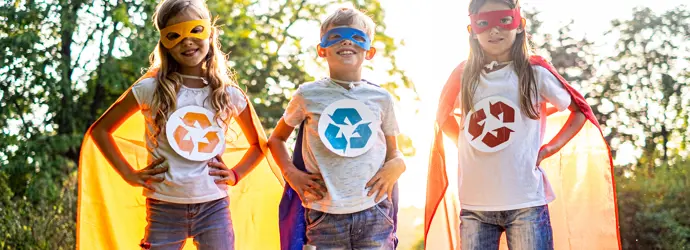
Talking about serious topics with children can be difficult. In fact, even when you're discussing their favourite superhero or video game, one minute they are attentive and the next, half a gallon of milk has spilt on the kitchen floor and mini waves of white are seeping into the grout lines, making beelines towards your bare feet. So, when it's time to teach children about plastic pollution, it’s no wonder the thought alone sends shivers down your spine! But don’t fret, just follow these tips. In the end, you’ll all feel empowered to be part of positive change!
Reliable sources for facts about plastic pollution for kids
When you’re looking for factual information about plastic pollution for children, it pays to use sources you can trust. Reputable news sites, societies, charities, and organisations that specialise in the natural world and environmental issues are a good port of call, such as National Geographic Kids and the World Wildlife Fund. It’s also great if they have child-specific sections, as this will ensure the content is designed for a younger audience.
An overview of plastic pollution for kids
To introduce the topic of plastic pollution for children you might want to start with an overview to ease them into the subject. It’s important they understand that plastic is a very useful man-made material that we need for essential things like medical supplies, bike helmets, and more. However, it’s also important to teach them that issues with plastic stem from the fact that many of us use more than we need. ‘Single-use plastic’ is particularly problematic, since it’s only designed to be used once before throwing it away. More so, it makes up 50% of all plastic produced, including:
- Straws
- Shopping bags
- Some types of packaging
This plastic takes a long time to break down, and a lot of it ends up in oceans and seas. Check out our dedicated article for a more detailed breakdown of how plastic packaging affects the environment.
Plastic pollution for kids: how to understand the facts with numbers
Sometimes presenting information in numbers can more easily help explain facts about plastic pollution for kids. Statistics can be hard to understand, however, when they're too abstract, so finding real-world comparisons can be a handy way to get the message home. Take facts about ocean plastic pollution for kids as an example.
Making facts about ocean plastic pollution for kids relatable
When we teach children about plastic pollution in our oceans, it can be helpful to provide concrete references that they can understand. For example:
- At least 8 million tonnes of plastic end up in the oceans each year.1 With weights, children can think about them in terms of animals. As the average weight of a giraffe is one tonne, you could explain that fact as being like 8 million giraffes.
- Plastic can take over 400 years to break down.1 Periods of time can be explained in terms of generations. That’s up to 20 generations of a family, which can be imagined as your great, great, great… (and so on) grandkids.
You can also share additional facts with them, to provide a greater depth to their understanding, and give them an idea of the nuances of plastic waste. In this case, you can talk about how long it takes different types of plastic objects to break down on average. The stats are as follows:2
- Plastic bag: 20 years
- Plastic coffee cup: 30 years
- Plastic straw: 200 years
- Plastic rings from a 6-pack: 400 years
- Plastic water bottle: 450 years
- Plastic cup: 450 years
- Coffee pod: 500 years
- Disposable nappy: 500 years
- Plastic toothbrush: 500 years
Why not make it interactive, and ask them to guess what takes longer to break down, before revealing the answers?
- An estimated 5 trillion plastic pieces are thought to be floating in the planet’s waters.3 Large numbers can be imagined as multiples of a figure they can imagine. This example can be compared to the world's population. There are nearly 8 billion people on the planet, and 5 trillion is 625 times that figure. So, for each person, there are 625 pieces of plastic in the sea.
- There are as many as 51 trillion microplastic particles in the seas.4 To give them some context to the enormity of this figure, you could explain that this number is 500 times more than the number of stars in our galaxy.
Certain statistics don’t necessarily need to be transformed into comparisons, as they speak for themselves. This is particularly the case with percentages, such as:
- More than 50% of sea turtles have eaten plastic rubbish3
- 90% of seabirds eat plastic rubbish3
Matching facts about plastic for kids to their ages
The information you choose to share with children will largely depend on their ages. There are plastic pollution facts for kids that are more appropriate for older children, like the stat that 10% of dead animals that have been discovered during beach clean-ups around the world were tangled up in plastic bags.3 Younger children might find these kinds of facts more difficult to cope with. Trust your instinct and judgement on what you feel is suitable.
Positive facts about plastic for kids
Once you’ve shared the big picture, and explained why it’s important for us to take action, you can talk about how to reduce your plastic consumption at home. This will help them feel like they can make a positive contribution to tackling the problem.
Make a list of what changes you can all make, such as buying reusable shopping bags/water bottles, and choosing products that have recyclable plastic packaging. You could even join a beach clean-up event.
Tip
Ever wondered how plastic packaging is recycled and what it gets turned into? Check out our dedicated guide.
Plenty and the environment
You can also explain that there are businesses that are committed to playing their part and making plastic packaging that leaves as little impact on the planet as possible. Take Plenty Flexisheets, for example. There’s no cardboard core to recycle and less plastic* in the packaging! While there’s 55% recycled plastic in the packaging, our goal is to make all of our packaging 100% recyclable by 2030.
On top of this, did you know that Plenty Original, Flexisheets and Max kitchen roll sheets are now certified compostable?** Now, the next time your four-legged bestie and monstera plant find themselves in yet another tussle, you can clean up using Plenty kitchen towels, comforted in the knowledge that they’ll go straight in the compost bin. (Your kitchen roll sheets, not your dog. You can just give them a big cuddle instead).
Now you can teach children about plastic pollution!
There are loads of plastic pollution facts for kids to learn that can help them understand what’s happening in the world and, crucially, how they can help make sustainable choices to create a better planet. Because whilst they won’t ever part with their manky old teddy bear that’s smelled like gone-off milk and baby slobber for years now, they will want the world to be the best place it can be for those they love.
*Compared to Plenty Original 1R
** Plenty kitchen towels are certified as home and industrially compostable according to NF T 50-800 and EN14995.
Sources:
1 National Geographic Kids, The Problem with Plastic Pollution
2 WWF, The Lifecycle of Plastics
3 National Geographic Kids, Plastic in the Ocean, https://www.natgeokids.com/uk/kids-club/cool-kids/general-kids-club/plastic-in-the-ocean/
4 Florida Atlantic University, FAU Scientists uncover ‘missing’ plastics deep in the ocean
Related articles
Clean and green! 10 tips for eco-friendly cleaning
From baking soda and lemon cleaning methods to a surprising kitchen cupboard treatment for mould, read our sustainable cleaning products ideas for your home!
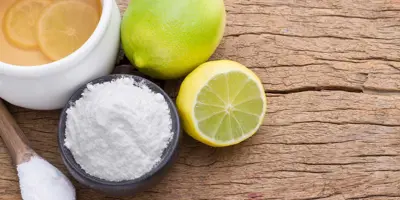
7 steps to create a DIY cardboard castle at home
Learn how to make a cardboard castle to fit their favourite interests. Find step-by-step cardboard castle DIY instructions and theme ideas here.
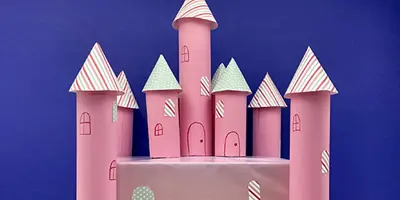
Reducing waste at home: The easy way
Find out how to save energy at home and reduce food waste with our top tips. Read on for handy pointers for making your household more eco-friendly.
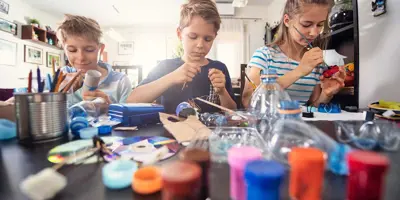
6 tips on how to save water at home
Learn how to save water at home. Find five easy ways to conserve water, so you can bring down your waste and make some clever savings in the process, here.

What does biodegradable mean and what is non-biodegradable?
Biodegradable and non-biodegradable? What do they mean?! Don’t fret, discover the definitions and biodegradable materials to become an eco-friendly pro!
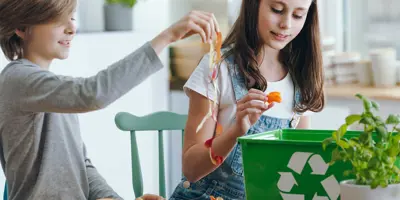
How to lead a sustainable lifestyle in 5 key ways
Learn how to live more sustainably with our tips on diet, methods of transport, energy consumption and product choices. Find sustainable living examples here.


